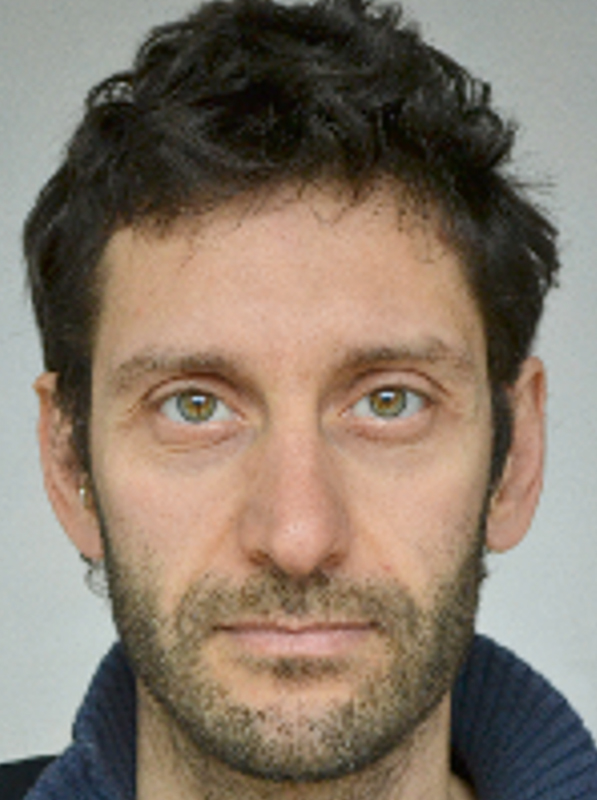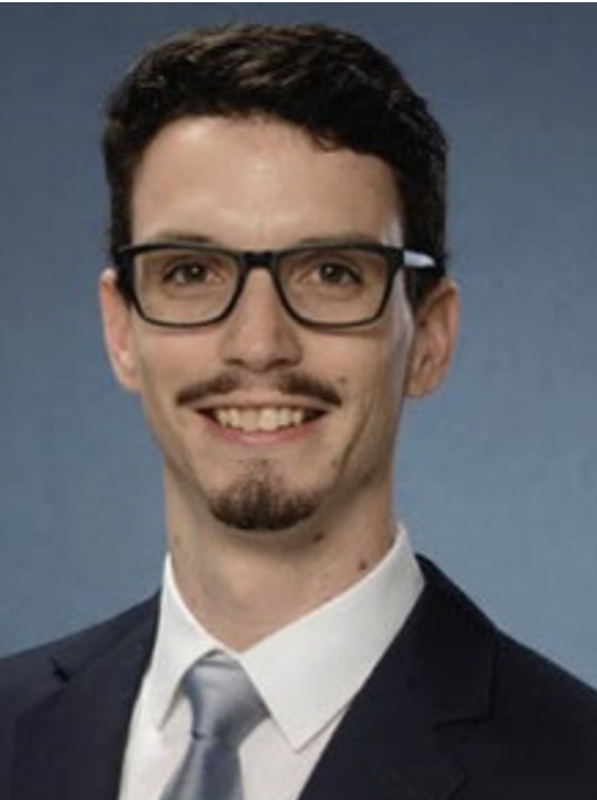RESEARCH 2022
– funded projects
A reverse translational approach to evaluate individual variability in treatment response in alcoholism

University of Camerino, Camerino, Italy
School of Pharmacy
Nazzareno Cannella, PhD
Assistant Professor
Abstract
Notwithstanding decades of research on alcohol use disorders (AUD), the few approved medications show limited effect sizes, and the quest for better treatments is facing a stagnation as many promising targets failed clinical expectations. AUD is characterized by a large phenotypic and genotypic heterogeneity. Consistently, treatments efficacy varies between patient subgroups. Therefore, AUD medicine is now moving toward the personalization of treatments. Here, it is hypothesized that multi-symptomatic models of individual variability in AUD would offer better translational results than group-based approaches classically adopted by preclinical research. To validate this novel approach, it is proposed an inverse translational pharmacology project to compare the effect of one approved medication for AUD (naltrexone), and one drug that failed in AUD clinical trials (pexacerfont), on alcohol seeking in rats subjected to multi-symptomatic model of AUD allowing to divide them into multiple AUD vulnerability profiles (including one AUD resilient group). AUD-like vulnerability profiles will be screened in two cohorts of rats, then the effect of naltrexone and pexacerfont on alcohol seeking will be tested. It is predicted that naltrexone will be more efficacious in vulnerable compared to resilient rats and that its effect size will vary between vulnerability profiles, while pexacerfont will be less or no effective in vulnerable rats. This would demonstrate that models of individual variability are endowed with a significant translational validity and may be used to improve translational strategies and to increase the success ratio of clinical trials in AUD.
Lay summary
Alcohol use disorders (AUD) causes three-million yearly deaths worldwide. Despite the urgency of efficacious treatments, R&D in AUD faces a period of stagnation due to poor translational performance of currently used preclinical screening. Here we propose a proof-of-concept project to explore an innovative preclinical approach to screen drugs for AUD.
Improving Self-control in Nicotine Addiction by Entrainment of Brain Oscillations in the Temporo-Parietal Junction

Ludwig-Maximilians-Universität München
Department for Psychology
Dr. Dr. Alexander Soutschek
Emmy Noether research group leader
Abstract
In recent years an increasing number of studies investigated the effectiveness of non-invasive brain stimulation as non-pharmacological treatment of addiction. So far, studies in this field have focused almost exclusively on the prefrontal cortex as neural substrate of inhibitory control processes. Behavioral studies, however, suggest that also interventions enhancing future orientation (rather than inhibitory control) reduce substance demand, for example in nicotine addiction. The goal of the proposed study therefore is to provide first evidence that neural interventions targeting brain systems involved in future orientation can reduce cigarette demand in smokers. For this purpose, we apply transcranial alternating current stimulation (tACS) to the temporo-parietal junction (TPJ), a brain region that we have recently shown to be causally involved in future orientation (Soutschek et al., 2016; Soutschek et al., 2020). We measure whether entrainment of beta oscillations in the TPJ via tACS (relative to sham and control stimulation) reduces established behavioral measures of cigarette demand in smokers. By translating findings from basic research on the neural basis of self-control to the clinical domain of addiction research, this innovative project might pave the ground for the development of alternative neural interventions in addiction which target the TPJ rather than the prefrontal control system.
Lay summary
Neural interventions tackling self-control deficits in nicotine addiction predominantly focus on the prefrontal cortex as neural basis of inhibitory control, but besides inhibitory control also future orientation plays an important role in regulating cigarette demand. We test whether brain stimulation over the temporo-parietal junction reduces cigarette demand via enhancing future orientation.
Investigation of the Effects of Cannabidiol (CBD) on Cue-Induced Alcohol Craving, Stress Response, Negative Affect and Reward System Response in Individuals with Alcohol Use Disorder

Central Institute of Mental Health Mannheim
Department of Addictive Behavior and Addiction Medicine
Patrick Bach, PD Dr. med, B.Sc.
Head, RG Neuroenhancement
Abstract
Alcohol use disorder (AUD) is highly prevalent and characterized by devastating health and social consequences. To date, only a few medications are approved for its treatment, all of whom suffer from modest effect sizes, leaving much room for improvement. A promising new compound for AUD treatment is Cannabidiol (CBD), due to its stress-reducing, anxiolytic, antidepressant, anticompulsive actions and excellent tolerability. Preclinical data demonstrated that CBD significantly reduces the reinforcinq properties of alcohol and alcohol consumption and modulates brain circuits that mediate drug seeking. First clinical data in patients with opioid use disorder indicated significant craving-reducing effects of CBD, already one hour after the first dose of CBD. The profile of behavioral and pharmacological effects of CBD, as well as CBD’s effects within brain networks that mediate drug seeking support the treatment potential of CBD in AUD. As first study, we seek to conduct a randomized-controlled double-blind proof-of-principle study in N=26 individuals with AUD to investigate actions and neurobiological mechanisms of CBD in AUD, by assessment of CBD’s effects on alcohol craving, stress and negative affect (actions), as well as activation in the mesolimbic reward system(mechanisms) within the framework of an experimental stress- and craving-induction procedure with high ecological validity and an established functional magnetic resonance imaging paradigm to probe cue-induced activation within brain circuits that mediate alcohol craving. Results will elucidate mechanisms and actions of CBD in AUD and will inform following confirmatory trials, which could ultimately lead to the establishment of CBD as new treatment option in AUD.
Lay Summary
First data indicate that Cannabidiol, a substance with stress-reducing, anxiolytic, antidepressant and anti-compulsive actions, is a promising compound for treating alcohol use disorder. As first study, we seek to determine the clinical effects of Cannabidiol on craving, stress and negative affect and to investigate the neurobiological basis underlying these effects.
Non-invasive brain-stimulation (NIBS) enhanced abstaining from smoking in realistic high-risk relapse situations


University of Tübingen, Germany
Department of Psychiatry & Psychotherapy
Dr. Ann-Christine Ehlis
Head of Psychophysiology & Optical Imaging (Group leader; Junior Research Group leader)
ann-christine.ehlis@med.uni-tuebingen.de
University of Tübingen, Germany
Department of Psychiatry & Psychotherapy
Dr. Agnes Kroczek
Psychophysiology & Optical Imaging
agnes.kroczek@med.uni-tuebingen.de
Abstract
Substance use disorders (SUD) are characterized by increased automatized responses to drug-related cues (cue-reactivity) and deficient cognitive control. Cue-reactivity can be elicited by internal (e.g. mood) or external (e.g. situations) cues closely related to consumption. Therefore, one aim for relapse prevention is to control CR by the enhancement of cognitive control, e.g., via noninvasive brain stimulation (NIBS) of cortical areas involved in regulation processes. However, thus far, treatment effects of NIBS for relapse prevention in SUD are only moderate, despite clear neurophysiological targets. Critically, NIBS is commonly applied in a context not related to CR, namely a highly standardized laboratory situation, neglecting the current (brain-) state of the individual. Therefore, in this proposal, relapse-relevant (brain-) states will be evoked in individual, naturalistic settings outside the laboratory and monitored by functional near-infrared spectroscopy (fNIRS; assessing cortical activation patterns) and heartrate variability (HRV; as a periphery physiological measure) to capture the optimal (cortical) state for subsequent NIBS by means of transcranial direct current stimulation (tDCS). We aim to improve the efficacy of relapse prevention in SUD within this highly innovative approach. At its heart, multimodal measurements during real-world (substance-related) choices will be used to identify markers for individual target states indicating the therapeutic application of tDCS in a context with high ecological validity. In contrast to current approaches, the target brain state of the individual adaptively controls the tDCS to maximize therapeutic outcome. One obstacle is to clear the data from artefacts allowing its interpretation at a single-trial level, which requires the planned proof-of-concept study.
Lay summary:
We investigate (brain-) states of smokers in high-risk relapse situations during smoking and abstaining. Thereafter, we will use these (brain-) state measures in high-risk situations to support abstinence by noninvasive brain stimulation (NIBS). For the first time, NIBS will be adaptively applied based on individual risk markers. The goal is the improve relapse prevention using neuroscientific methods to promote learning mechanisms during abstaining in high-risk situation for relapse.
